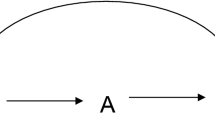Abstract
Confounding occurs when the effect of the exposure of interest mixes with the effects of other variables that are causes of the exposure or that share common causal ancestors with the exposure (Kleinbaum et al.,1982). Understanding and adjusting for confounding in epidemiologic research is central to addressing whether an observed association is indeed causal. It is imperative to control confounding because it can make an association appear greater or smaller than it truly is, and can even reverse the apparent direction of an association. Confounding can also make a null effect (i.e., no causal relation between the exposure and the disease) appear either causal or preventive. For a covariate variable to induce confounding, there must be a relation between both the exposure and the covariate in the source population and between the covariate and the disease (among those unexposed). In addition, the covariate must not be affected by the exposure. In nonrandomized epidemiologic studies, confounding can be controlled by design or in the analysis, but only for known and measured confounders.
Access this chapter
Tax calculation will be finalised at checkout
Purchases are for personal use only
Similar content being viewed by others
Author information
Authors and Affiliations
Rights and permissions
Copyright information
© 2009 Springer Science+Business Media, LLC
About this chapter
Cite this chapter
Lash, T.L., Fink, A.K., Fox, M.P. (2009). Unmeasured and Unknown Confounders. In: Applying Quantitative Bias Analysis to Epidemiologic Data. Statistics for Biology and Health. Springer, New York, NY. https://doi.org/10.1007/978-0-387-87959-8_5
Download citation
DOI: https://doi.org/10.1007/978-0-387-87959-8_5
Published:
Publisher Name: Springer, New York, NY
Print ISBN: 978-0-387-87960-4
Online ISBN: 978-0-387-87959-8
eBook Packages: Mathematics and StatisticsMathematics and Statistics (R0)




